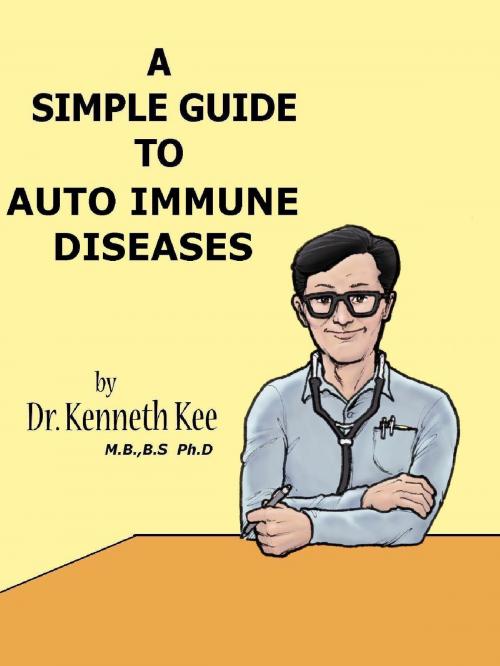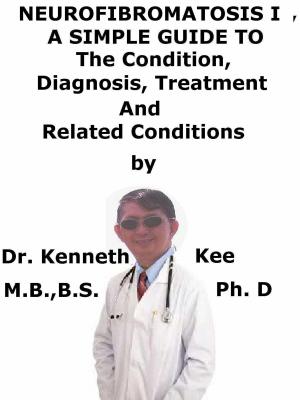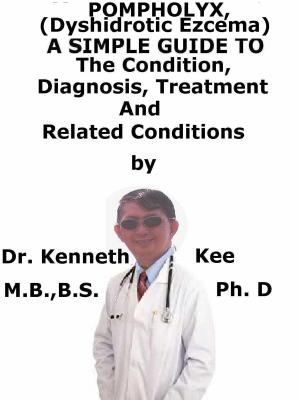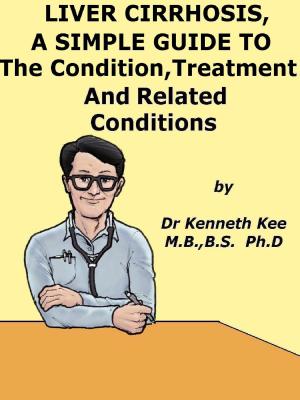A Simple Guide to AutoImmune Diseases
Nonfiction, Health & Well Being, Health, Ailments & Diseases, Immune System, Health Care Issues| Author: | Kenneth Kee | ISBN: | 9781301013500 |
| Publisher: | Kenneth Kee | Publication: | November 11, 2012 |
| Imprint: | Smashwords Edition | Language: | English |
| Author: | Kenneth Kee |
| ISBN: | 9781301013500 |
| Publisher: | Kenneth Kee |
| Publication: | November 11, 2012 |
| Imprint: | Smashwords Edition |
| Language: | English |
An auto immune disease is a disease of the human body where the immune system of the
body attacks its own cells in the joints as in Rheumatoid arthritis
Or in the skin as in psoriasis
Or in the muscles as in Myasthenia gravis
Or throughout the body as in Systemic Lupus Erythematosis
There are over 80 different types of auto immune diseases in the body
What is the cause of Auto Immune Disease?
Normally the body immune system which consists of the white blood cells will attack the
harmful bacteria, cancer or other substances in the body and try to destroy them as antigens.
In the auto immune disease the body's immune system attacks the normal body cells instead.
Some of the organs or tissue damaged by the auto immune disease includes:
- Bones and joints
- Muscles
- Blood vessels
- Endocrine glands
- Skin
- Blood cells
The cause of this behavior is not known but micro-organisms and toxins may trigger off these reactions in people who may have the genes to be affected by the abnormal immune response.
What are the symptoms of auto immune diseases?
Symptoms may be:
-
fatigue
-
fever
-
abnormal symptoms depending on the organ affected
How is the diagnosis of an auto immune disease made?
-
antinuclear antibody test
-
C reactive Protein
-
Erythrocyte Sedimentation rate(ESR)
What is the Treatment of Auto immune disease?
The treatment depends on the specific disease and organ involved.
The purpose of treatment is to:
-
boost the immune system of the body
-
treat the symptoms of the auto immune disease
-
control the severity of the auto immune process
Medicines :
Medicines prescribed for the control of the immune system are called immuno-suppressive
drugs:
-
corticosteroids such as prednisolone
-
non steroid drugs such as methotrexate, cyclophosphamides
Some auto immune diseases causes depletion of the red blood cells .
In these conditions blood transfusions may be required
Where the bones and joints are involved, supportive help with bones and joints are needed.
What are the complications of the auto immune disease?
There is at the moment no cure for these diseases.
However the auto immune diseases can be controlled with medications.
The condition can become worse or the side effects of the medications may cause infections.
What is the prognosis of auto immune disease?
The outcome depends on the disease. However most are chronic and cannot be easily cured.
They however can be controlled with medications.
TABLE OF CONTENT
Chapter 1 What is Auto Immune Disease?
Chapter 2 Addison's Disease
Chapter 3 Celiac Disease
Chapter 4 Myasthenia Gravis
Chapter 5 Psoriasis
Chapter 6 Rheumatoid Arthritis
Chapter 7 Systemic Lupus Erythematosis
Chapter 8 Epilogue
An auto immune disease is a disease of the human body where the immune system of the
body attacks its own cells in the joints as in Rheumatoid arthritis
Or in the skin as in psoriasis
Or in the muscles as in Myasthenia gravis
Or throughout the body as in Systemic Lupus Erythematosis
There are over 80 different types of auto immune diseases in the body
What is the cause of Auto Immune Disease?
Normally the body immune system which consists of the white blood cells will attack the
harmful bacteria, cancer or other substances in the body and try to destroy them as antigens.
In the auto immune disease the body's immune system attacks the normal body cells instead.
Some of the organs or tissue damaged by the auto immune disease includes:
- Bones and joints
- Muscles
- Blood vessels
- Endocrine glands
- Skin
- Blood cells
The cause of this behavior is not known but micro-organisms and toxins may trigger off these reactions in people who may have the genes to be affected by the abnormal immune response.
What are the symptoms of auto immune diseases?
Symptoms may be:
-
fatigue
-
fever
-
abnormal symptoms depending on the organ affected
How is the diagnosis of an auto immune disease made?
-
antinuclear antibody test
-
C reactive Protein
-
Erythrocyte Sedimentation rate(ESR)
What is the Treatment of Auto immune disease?
The treatment depends on the specific disease and organ involved.
The purpose of treatment is to:
-
boost the immune system of the body
-
treat the symptoms of the auto immune disease
-
control the severity of the auto immune process
Medicines :
Medicines prescribed for the control of the immune system are called immuno-suppressive
drugs:
-
corticosteroids such as prednisolone
-
non steroid drugs such as methotrexate, cyclophosphamides
Some auto immune diseases causes depletion of the red blood cells .
In these conditions blood transfusions may be required
Where the bones and joints are involved, supportive help with bones and joints are needed.
What are the complications of the auto immune disease?
There is at the moment no cure for these diseases.
However the auto immune diseases can be controlled with medications.
The condition can become worse or the side effects of the medications may cause infections.
What is the prognosis of auto immune disease?
The outcome depends on the disease. However most are chronic and cannot be easily cured.
They however can be controlled with medications.
TABLE OF CONTENT
Chapter 1 What is Auto Immune Disease?
Chapter 2 Addison's Disease
Chapter 3 Celiac Disease
Chapter 4 Myasthenia Gravis
Chapter 5 Psoriasis
Chapter 6 Rheumatoid Arthritis
Chapter 7 Systemic Lupus Erythematosis
Chapter 8 Epilogue















